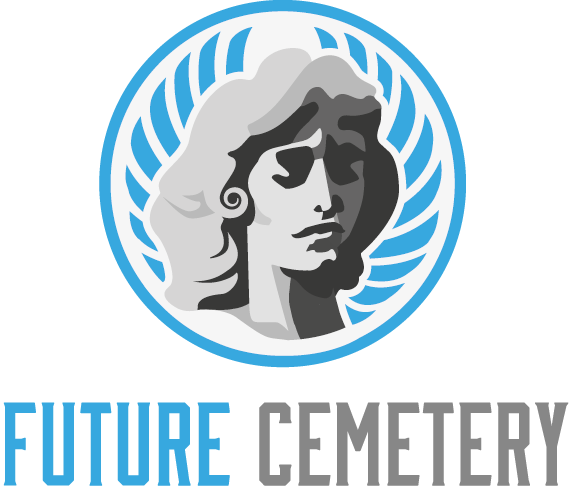Bermain DominoQQ di situs PKV terpercaya bisa menjadi pengalaman yang menyenangkan dan menguntungkan bagi para pemain. Dengan semakin populernya permainan kartu ini, banyak orang yang mencari cara untuk meningkatkan peluang mereka dalam meraih kemenangan. Namun, tidak semua situs PKV yang ada di internet bisa dipercaya. Oleh karena itu, penting untuk memilih situs yang tepat agar permainan bisa berjalan dengan aman dan nyaman.
Dalam artikel ini, kita akan membahas strategi sukses untuk bermain DominoQQ di situs PKV yang terpercaya. Kita akan menjelajahi berbagai aspek, mulai dari cara daftar di situs PKV, log in ke akun permainan, hingga tips bermain yang efektif. Dengan pemahaman yang baik tentang permainan dan memilih situs yang tepat, Anda bisa meningkatkan kesempatan untuk meraih kemenangan dan menikmati pengalaman bermain yang lebih baik. Mari kita mulai!
Pengenalan PKV dan DominoQQ
PKV adalah platform permainan online yang telah mendapatkan popularitas yang signifikan di kalangan pemain di Indonesia. pkv dominoqq Dengan menawarkan berbagai jenis permainan, termasuk poker dan domino, PKV menjadi salah satu pilihan utama bagi mereka yang mencari pengalaman bermain yang menyenangkan dan menguntungkan. Salah satu permainan yang paling banyak diminati di platform ini adalah DominoQQ, yang menggabungkan strategi dan keberuntungan dalam setiap langkah permainan.
DominoQQ merupakan variasi dari permainan domino yang menguji kemampuan pemain dalam mengelola strategi dan taktik. Dalam permainan ini, pemain diharuskan untuk mengkombinasikan kartu dominonya dengan baik agar dapat mengalahkan lawan dan meraih kemenangan. Selain itu, DominoQQ menawarkan peluang besar untuk mendapatkan keuntungan, membuatnya semakin menarik bagi para pemain. Dengan tampilan yang menarik dan mudah dipahami, pemain baru pun dapat cepat beradaptasi dan menikmati permainan.
Melalui situs PKV yang terpercaya, pemain dapat dengan mudah mengakses layanan dan fitur yang ditawarkan, seperti login PKV games, daftar PKV games, dan download PKV games. Dengan aplikasi PKV games yang tersedia, bermain DominoQQ menjadi lebih praktis, memungkinkan pemain untuk menikmati permainan kapan saja dan di mana saja. Keamanan dan kenyamanan dalam bermain juga menjadi fokus utama, menjadikan pengalaman pemain semakin maksimal.
Cara Memilih Situs PKV Terpercaya
Memilih situs PKV terpercaya merupakan langkah awal yang sangat penting bagi para pemain yang ingin menikmati permainan secara aman dan nyaman. Pertama-tama, pastikan untuk memeriksa lisensi dan regulasi situs tersebut. Situs yang terpercaya biasanya memiliki lisensi resmi dari otoritas perjudian yang diakui, yang menunjukkan bahwa mereka beroperasi sesuai dengan standar yang ditetapkan. Selain itu, bacalah ulasan dari pemain lain untuk mendapatkan gambaran mengenai reputasi situs yang Anda pertimbangkan.
Kedua, perhatikan variasi permainan yang ditawarkan oleh situs PKV. Situs yang baik biasanya menyediakan berbagai jenis permainan, termasuk dominoQQ, poker, dan aduqq. Dengan banyaknya pilihan permainan, Anda dapat memilih permainan yang paling sesuai dengan keahlian dan minat Anda. Pastikan juga situs tersebut memiliki fitur yang memudahkan Anda dalam melakukan login, daftar, dan download aplikasi untuk bermain di perangkat yang Anda pilih.
Terakhir, layanan pelanggan yang baik adalah salah satu indikator penting dari situs yang terpercaya. Pastikan situs tersebut menyediakan layanan pelanggan yang responsif dan dapat dihubungi melalui berbagai saluran, seperti live chat, telepon, atau email. Ini sangat penting untuk menyelesaikan masalah yang mungkin muncul saat bermain. Selain itu, periksa juga metode pembayaran yang ditawarkan untuk memastikan transaksi yang aman dan cepat.
Strategi Bermain DominoQQ
Untuk meraih kesuksesan dalam permainan DominoQQ, penting untuk memahami aturan dasar dan strategi yang efektif. Pertama, fokuslah pada pemahaman kombinasi kartu dan cara menghitung nilai kartu. Dalam DominoQQ, pemain harus bisa membaca situasi permainan dan memprediksi langkah lawan. Dengan mengamati pola bermain lawan, Anda dapat membuat keputusan yang lebih baik dalam setiap putaran.
Selanjutnya, penting untuk mengatur manajemen bankroll dengan baik. Tentukan batasan untuk diri sendiri sebelum bermain dan patuhi batas tersebut. Jangan tergoda untuk terus bermain saat mengalami kekalahan bertubi-tubi. Mengelola uang secara bijaksana membantu Anda bertahan lebih lama dalam permainan tanpa mengalami kerugian besar.
Terakhir, latihan menjadi kunci dalam mengasah kemampuan bermain DominoQQ. Manfaatkan situs PKV terpercaya untuk berlatih dan menguji berbagai strategi. Cobalah bermain dengan lawan yang berbeda untuk mendapatkan pengalaman baru dan memahami berbagai gaya permainan. Semakin banyak Anda berlatih, semakin besar peluang Anda untuk menjadi pemain yang handal.
Tips Meningkatkan Peluang Menang
Meningkatkan peluang menang dalam permainan DominoQQ di situs PKV terpercaya memerlukan strategi yang tepat. Pertama, penting untuk memahami aturan dan mekanisme permainan dengan baik. Ketika pemain menguasai cara kerja yang baik, mereka akan lebih mampu membuat keputusan yang cerdas saat bermain. Luangkan waktu untuk berlatih dan menguji berbagai teknik sebelum bergabung dalam permainan nyata.
Selain memahami aturan, pemilihan situs juga sangat berpengaruh. Pastikan bahwa Anda bermain di situs PKV yang terpercaya dan memiliki reputasi baik. Cek ulasan dan rekomendasi dari pemain lain untuk memastikan bahwa situs tersebut aman dan menyediakan pengalaman permainan yang adil. Ini akan mengurangi risiko kehilangan uang dan meningkatkan pengalaman bermain Anda.
Terakhir, kelola bankroll Anda dengan bijaksana. Tetapkan batasan berapa banyak uang yang bersedia Anda pertaruhkan dan patuhi batas tersebut. Jangan tergoda untuk terus bermain ketika mengalami kerugian atau mendapatkan kemenangan besar. Dengan pendekatan yang disiplin terhadap manajemen uang, Anda dapat memperbesar peluang untuk bermain lebih lama dan meningkatkan kemungkinan meraih kemenangan.
Kesimpulan dan Rekomendasi
Bermain DominoQQ di situs PKV terpercaya menawarkan pengalaman yang menarik dan mengasyikkan, terutama bagi para pecinta permainan kartu. Dengan pemahaman yang baik tentang cara kerja permainan dan strategi yang tepat, Anda dapat meningkatkan peluang untuk meraih kemenangan. Penting untuk memilih situs yang memiliki reputasi baik dan menyediakan sistem keamanan yang handal agar pengalaman bermain Anda menjadi lebih aman dan menyenangkan.
Kami merekomendasikan untuk selalu melakukan riset sebelum mendaftar di situs PKV. Pastikan situs tersebut memiliki lisensi resmi dan telah beroperasi dalam waktu yang cukup lama. Selain itu, jangan ragu untuk mencoba berbagai jenis permainan yang ditawarkan, seperti bandarqq, poker, dan aduq, agar Anda bisa menemukan permainan yang paling sesuai dengan keahlian dan minat Anda.
Terakhir, jangan lupa untuk memanfaatkan fitur-fitur yang disediakan, seperti aplikasi PKV games, untuk memudahkan akses permainan dimana saja. Mendaftar dan login ke akun Anda secara rutin juga akan meningkatkan peluang memenangkan lebih banyak permainan. Dengan demikian, Anda bisa menikmati setiap momen dalam bermain DominoQQ sambil meraih keuntungan.
